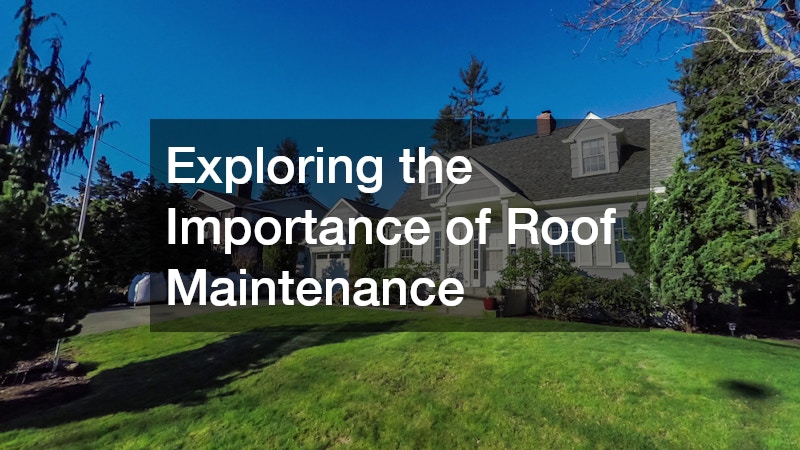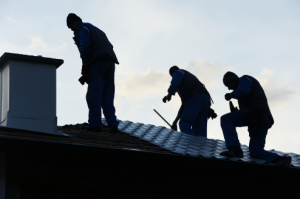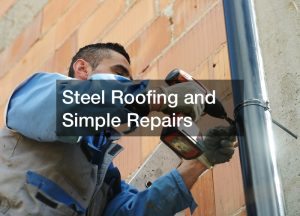How to Choose the Right Roofing Material for Your Home
Choosing the right roofing material for your home involves more than just picking a color or style. The type of roof you install affects your home’s overall value, energy efficiency, and protection against the elements. One of the most important roofing tips for homeowners is to weigh all factors—from durability and weather resistance to maintenance and aesthetics—before committing to a specific product. The good news is that today’s market offers a variety of roofing materials suitable for different climates, architectural styles, and budget levels.
It’s also essential to remember that every roofing system has its unique requirements and lifespans. You’ll want to consider how long the materials typically last, whether they need specialized installation, and how they will hold up to local weather conditions. Consult with a reputable roofing contractor or roofing company to understand the subtleties of each option. Professional advice helps you avoid costly mistakes and ensures you end up with a roof designed to stand the test of time. If you have a homeowners’ association, you might even need to coordinate an hoa roof repair or replacement according to specific guidelines—especially important if you live in a community with strict aesthetic or structural requirements.

Evaluating Asphalt Shingles
Among the most popular materials on the market, asphalt shingles offer a balance of affordability, ease of installation, and decent longevity. They come in a variety of colors and styles, making it simple to match your home’s exterior design. One of the biggest attractions of asphalt shingles is that they generally have a lower upfront cost compared to other materials like metal or tile. This makes them a logical choice for many homeowners, especially those looking to replace a failing roof on a tighter budget.
Below are some roofing tips for homeowners that highlight the pros and cons of opting for asphalt shingles. On the plus side, these shingles are relatively straightforward to install, which can cut down on labor costs. They are also lightweight, so you typically don’t need to reinforce your roof’s structure. However, asphalt shingles may have a shorter lifespan than premium materials. If you live in an area prone to extreme temperature fluctuations, you might see cracking or curling over time. Maintenance is key: routine inspections, timely roof repair, and adequate ventilation in your attic can extend the life of asphalt shingles by several years.
Additionally, one of the lesser-known roofing tips for homeowners is to keep an eye on the granules. If you spot excessive granule loss in gutters or notice large bald patches, it could be time for a roof replacement. Even if the damage appears minor, addressing it promptly prevents water infiltration and mold growth. A reputable roofing service can assess whether patching sections will suffice or if a complete overhaul is more cost-effective in the long run.
Considering Metal Roofing
When durability and modern aesthetics top the priority list, metal roofing stands out as a strong contender. Constructed from materials like steel, aluminum, or copper, these panels or shingles can last 40 to 70 years under normal conditions. That longevity, combined with high wind and hail resistance, makes metal an excellent choice for homeowners who want a worry-free roof. Another benefit is the energy efficiency: metal tends to reflect solar radiation instead of absorbing it, which can reduce cooling costs during hot summers.
Another set of roofing tips for homeowners revolve around budgeting and warranties. While metal’s upfront cost is higher than many other materials, that investment often pays off through minimal maintenance, fewer repairs, and a potentially longer interval before needing a roof replacement. Many manufacturers also include warranties that cover paint finishes and structural integrity for decades. On the downside, some communities have noise or aesthetic concerns about metal roofs. However, modern designs often incorporate insulation layers that mitigate sound issues, and many styles mimic the look of shingles or tiles for better neighborhood compatibility.
If you live in a region with frequent storms or heavy snowfall, metal performs especially well because of its slick surface that sheds snow quickly. When properly installed by skilled roofing companies, leaks are minimal, even in harsh conditions. One of the simpler roofing tips for homeowners is to do a cost-benefit analysis: weigh the higher upfront expense against the decades of relative maintenance freedom and energy savings. Metal’s resilience, combined with evolving design possibilities, makes it a solid option for those seeking both style and long-term reliability.

Weighing the Pros and Cons of Tile and Slate
Tile and slate roofs evoke an image of old-world charm and architectural elegance. These materials boast exceptional fire resistance, creating a safer environment for homes in wildfire-prone areas. They also tend to outlast many alternatives; in some cases, a well-installed slate roof can endure for a century or more. In fact, one of the best roofing tips for homeowners is to weigh aesthetic preferences alongside local climate considerations when deciding if tile or slate is a viable choice.
However, tile and slate aren’t without drawbacks. They are heavier than other materials, often requiring structural modifications to the home’s framework. Additionally, the initial cost of these materials can be significantly higher, and the specialized labor needed for installation may increase project costs. Repairs can also be tricky; replacing cracked tiles requires working with a roofing contractor who has experience handling these delicate materials.
It’s also worth noting that tile and slate can be vulnerable to breakage if a homeowner or technician walks carelessly on the roof. Among the top roofing tips for homeowners is to be mindful of how well the materials align with your region’s weather conditions. In colder climates, freeze-thaw cycles can cause cracks, leading to further water damage if left unattended. If you value long-lasting beauty and can accommodate the cost and structural requirements, tile or slate might be the perfect blend of form and function for your home.
Understanding Flat Roofing Solutions
Flat roofs are less common for residential properties, but they appear in modern architectural designs or multi-story expansions where a level surface is desired. A flat roofing service might install rubber membranes, modified bitumen, or PVC/TPO materials to create a watertight seal. Although traditionally associated with commercial buildings, these systems can suit contemporary home styles that emphasize a clean, minimalist look. One of the essential roofing tips for homeowners is to consult a reliable roofing contractor for expert guidance on your chosen material, as flat roofs are particularly sensitive to installation quality and drainage planning.
Proper slope, or “pitch,” is crucial. Even a flat roof isn’t truly flat—it typically has a slight incline to guide water toward drains or gutters. Standing water can accelerate deterioration and lead to leaks if your roof isn’t well maintained. Another important consideration is the membrane’s material. Different membranes have varying lifespans and costs, and some require more frequent checks to prevent cracks or punctures. Routine maintenance, such as clearing debris and ensuring drains stay unclogged, is vital for preventing water ponding.
Because of their unique design, flat roofs can be used for functional areas like rooftop gardens or lounge spaces. Homeowners who take advantage of this design should be prepared to reinforce the roof deck and invest in extra waterproofing. As appealing as that rooftop deck may be, always ensure you’re working with a roofing company skilled in flat installations and repairs. Skimping on quality or ignoring routine checkups could mean an unexpected water issue down the line.

Factoring in Wood Shakes and Shingles
Wood shakes or shingles provide a classic, rustic look that works especially well with cottages or historically styled homes. They can be crafted from cedar, redwood, or other durable wood species, contributing to a natural appearance that evolves over time as the material weathers. However, there are some practical considerations to keep in mind, especially in areas with high humidity or frequent rainfall.
Additionally, roofing tips for homeowners often include advice about local building codes and HOA restrictions when considering wood. Some communities may disallow wood shakes due to fire safety concerns, unless the product is treated with fire-retardant chemicals. Maintenance is also critical. Wood requires periodic treatment to stave off rot, mold, and insect damage. If you skip routine care, you could face the need for frequent roof repair or even early replacement.
Despite the necessary upkeep, wood remains a popular choice for those aiming for a distinctive and traditional aesthetic. With modern treatments, wood shakes can last 30 years or more under the right conditions. One of the major benefits includes insulation properties—wood can help keep indoor temperatures stable. If you’re exploring this option, be sure to consult a professional roofing service with experience in wood installations. Such specialists can guide you on the best local species, optimal treatments, and proper ventilation required to get the most out of a wood roof.
Considering Synthetic and Composite Materials
Recent advancements in manufacturing have led to synthetic or composite materials designed to replicate the look of wood, slate, or tile without the inherent drawbacks like weight or susceptibility to moisture. These products often feature a blend of polymers and recycled materials, making them lighter, more durable, and sometimes more eco-friendly. One of the major appeals is the ability to achieve high-end aesthetics at a lower cost and with fewer maintenance requirements.
One of the roofing tips for homeowners is to thoroughly research the brand and track record of composite materials you’re considering. Some come with impressive warranties and proven resistance to extreme conditions; others may be newer to the market and lack long-term performance data. Another plus is that these materials can be easier to install than natural alternatives, which might reduce your labor costs.
Keep in mind, not all composite roofs are created equal. Quality can vary significantly from one manufacturer to another. In addition, certain synthetic products may fade or experience cracking under intense UV exposure. Before investing, request samples and test them for durability. Then consult your roofing company regarding their experience with that particular brand. This approach ensures you don’t become a beta tester for an unproven product line.

Aligning with Local Regulations and Community Standards
For homeowners in planned developments or condominiums, an hoa roof repair or replacement project often requires navigating the guidelines of a homeowners’ association. HOAs usually have strict regulations covering everything from color palettes to specific roofing materials and styles. Among the most critical roofing tips for homeowners is to keep an eye on your roof’s ongoing condition and address any needed work well before it becomes an urgent problem. Submitting your plans early to the HOA can save time and hassle if you need prior approval.
Likewise, local building codes may influence which roofing materials are permissible in your area. High-wind or hurricane zones often require specially rated shingles or underlayment. Areas prone to wildfires frequently place restrictions on flammable materials like untreated wood. By discussing these regulatory nuances with your roofing contractor, you can avoid potential fines or complications. A professional team will be well-versed in these rules and can help ensure you remain in compliance.
Roof replacements also provide an opportunity to bolster energy efficiency. Many state or city governments offer incentives, such as tax credits or rebates, for installing reflective or otherwise eco-friendly materials. A thorough understanding of your local codes, association guidelines, and incentive programs helps you make a well-informed decision that aligns with both your budget and community standards.
Budgeting for Long-Term Value
Regardless of which roof you install, it’s vital to think about total cost of ownership—initial materials, installation, maintenance, and eventual roof replacement. One of the roofing tips for homeowners is to compare not just the sticker price but also the expected lifespan of each material. For instance, if a metal roof costs double what asphalt shingles do, but lasts three times as long, the metal option might be more economical over a 30- to 50-year span.
Annual and seasonal upkeep also factors into the financial picture. Some materials demand frequent cleaning or sealing, driving up maintenance expenses. If you need to pay for a flat roofing service to check membrane seams twice a year, that’s an additional ongoing cost. Meanwhile, choosing a more durable material up front could lower your total number of repairs and stretch out the time between replacements.
Finally, you might want to investigate how your choice of roofing material impacts homeowner’s insurance. Some insurers offer discounts for fire-resistant or impact-resistant roofs, which can offset the higher initial costs of premium systems. The best route is to weigh all these financial considerations carefully, possibly with the help of a roofing contractor or roofing company that can run you through detailed estimates. Making a well-rounded assessment often saves you from sticker shock and ensures you’re making an investment that truly matches your lifestyle and long-term housing goals.
Choosing the right roofing material means juggling multiple factors—style, climate, budget, local regulations, and durability. Throughout the process, keep your priorities clear: do you want the longest lifespan possible, the most cost-effective option, or the best blend of aesthetics and performance? Understanding these priorities and asking the right questions at the outset helps you avoid second-guessing or overspending later on.









